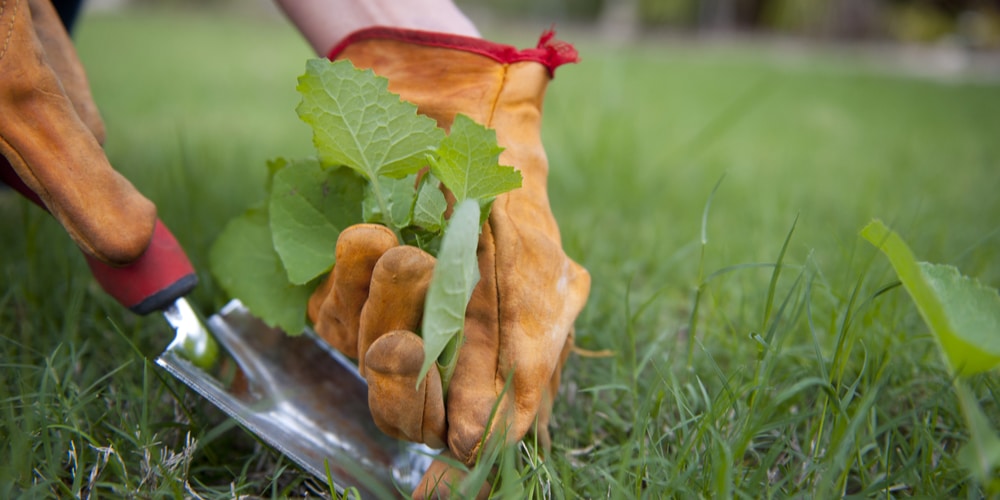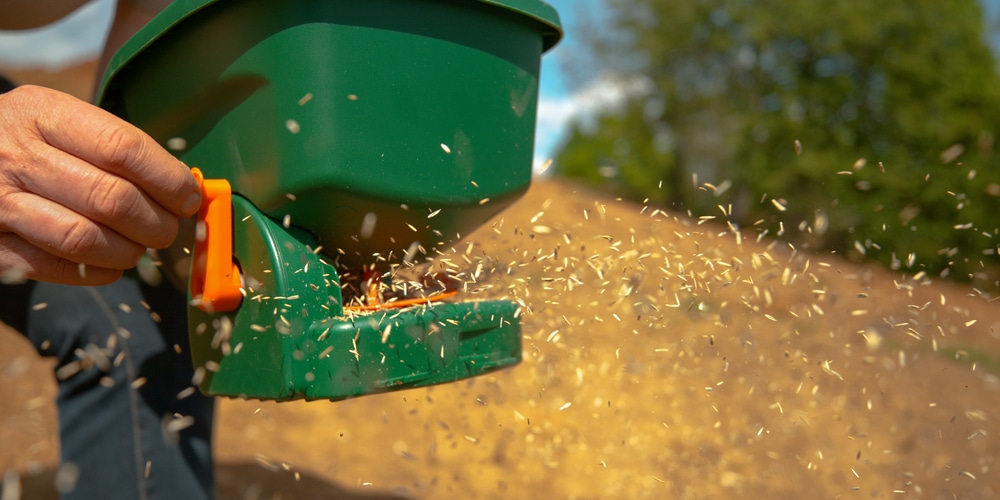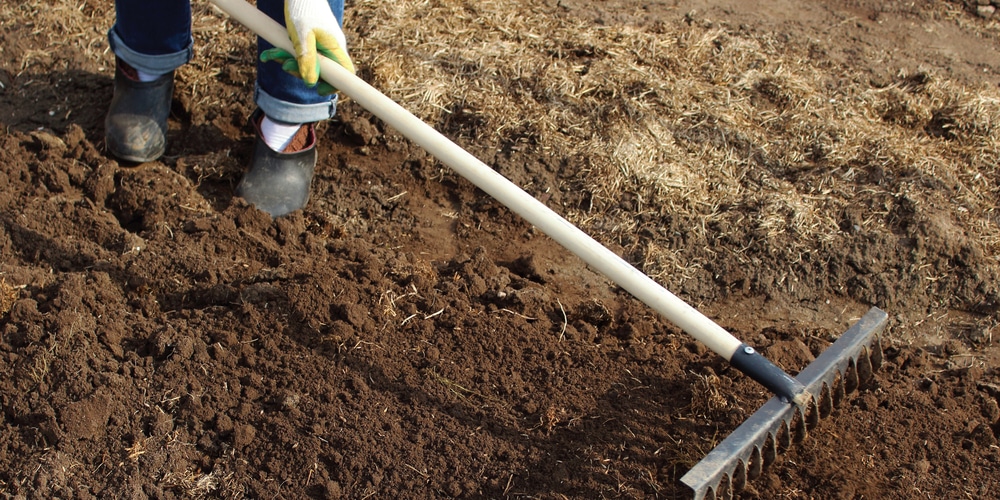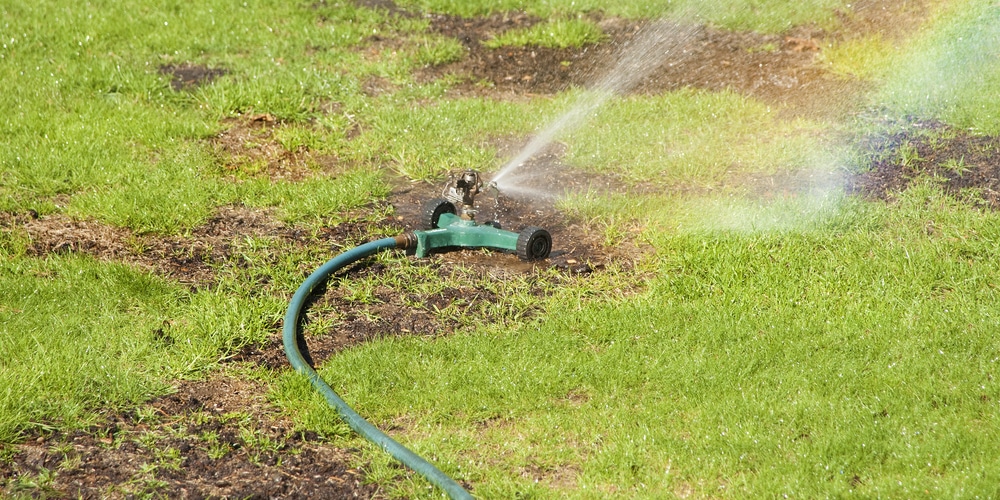Do you have an area of your lawn that you need to seed? Or are you planning to plant a new lawn? If so, you may be wondering whether to grow the seeds on top of the soil or whether they need to be buried.
If you’re wondering whether grass seeds will be able to germinate if they are on the soil surface, read on. This article will tell you exactly how to plant grass seeds to create a healthy, green lawn.
Grass Seed Will Grow on Top of Soil
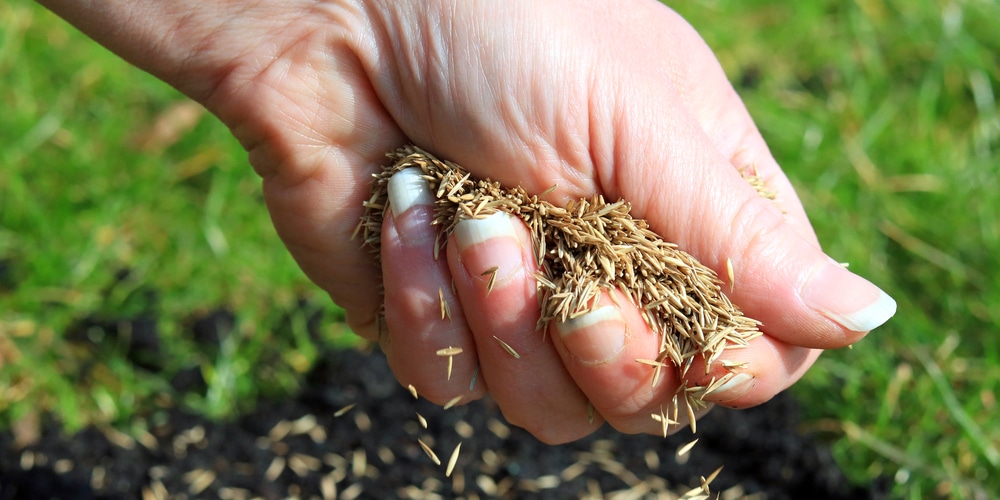
Grass seeds will grow if they are sprinkled on top of the soil. It’s best not to bury the seeds as this will reduce the chances of the seeds germinating. Seeds that have been planted may not be able to break through the soil if you put too much soil on top of them.
To successfully germinate grass seeds and create a thriving lawn, you’ll need to prepare the ground and care for the new shoots correctly.
Here are some top tips for seeding a new lawn.
1. Prepare the soil
Your grass seeds will have the best start in life if you loosen the topsoil and pull out any weeds. Eliminating weeds will mean that your grass shoots don’t have to compete with them for nutrients and water. You can either pull up the weeds manually (here are some good weed pullers) or apply a herbicide. If you don’t want to use a strong herbicide, you can kill weeds with ammonia. Apple cider vinegar is also an effective natural weed killer.
Loosening the topsoil will help aerate the soil and create tiny pockets for the seedling to grow.
If your yard is uneven, you can fill in the holes with some topsoil. Then, flatten out any bumps with a roller or by shoveling off excess soil and fill up the holes, and effectively flattens your yard. This will allow you to create an even lawn that you can be proud of.
It’s also beneficial to test your soil’s pH range before planting seeds. This will allow you to add extra nutrients and change the pH slightly if necessary. Most varieties of grass prefer to grow in soil that’s slightly acidic. A pH range of between 6.2 and 7 is perfect for grass.
You can either buy a soil testing kit online or at a garden center or ask a professional gardener to test your soil. If your soil is too alkaline, you can add some wood ash or lime to make it more acidic. If it’s too acidic for grass to grow, adding sulfur or compost can help to lower the pH range.
Before seeding your lawn, it’s wise to apply a starter fertilizer as this will help the seeds germinate and feed the young grass shoots. Grass needs adequate nitrogen, potassium, and phosphorous to grow healthily. Give the ground a light watering to help the fertilizer soak in, but don’t overwater, or the fertilizer will be washed deep into the ground and won’t benefit the new grass.
2. Seed your lawn
Before seeding your lawn, you’ll need to do some research into the best variety of grass seeds for your climate. Grass is either warm season or cool season. If you live in the north of America, cool-season grass grows best, while those in the south should choose warm-season grass. If you live in the transition zone which spans the center of America, you can plant either warm or cool-season grass varieties.
Grass seeds are available either in a single variety or as a mix of different grasses. Some packets of grass seeds have already been dipped in fertilizer to help them grow. Seeds can be either scattered by hand or, for larger yards, can be speed using a seeder. Whichever method you choose, you should aim to spread between 15 and 20 seeds for each square inch of your yard. If you’re interested, here’s how and why you may wish to overseed a yard.
3. Rake or roll the ground
Grass seeds need to have adequate contact with the soil for them to be able to grow. After germination, grass seeds will grow a first root known as the radicle. This root will penetrate the soil and allow the seed to establish itself. If the seed isn’t able to grow its first root quickly enough, the germinated seed may die.
To ensure that your grass seeds can become established, they’ll need to have good contact with the soil. After sprinkling the seeds on the ground, you can either gently rake the seeds to mix them with the soil. Alternatively, use an empty roller to push the seeds into the soil lightly.
4. Water the seeds
Grass seeds require adequate moisture if they are to germinate and grow successfully. After planting your seeds, you should provide them with water and then keep the topsoil moist at all times. Your seeds won’t be able to germinate if they haven’t absorbed enough water. Some gardeners recommend soaking grass seeds as this helps to speed up the germination process and helps the young grass seedlings to establish their rooting system quicker.
Don’t allow your grass seedlings to dry out, or they may die. The topsoil should be moist at all times. If you allow your seedlings to dry out, they’ll die. Your grass seedlings also need warm enough soil temperatures and enough light to grow correctly. It’s essential to plant your seeds at the beginning of the growing season, as this will improve their chances of thriving.
While grass seeds do need enough water, you should be careful not to overwater the seeds, or they could wash away. To avoid this problem, you can use a hose that has a mister attachment.
Your grass seeds will take between seven and 28 days to fully germinate, depending on the variety of grass you’ve planted. You’ll need to keep the soil moist during the germination period. You’ll also need to keep traffic off the seeded area until the grass has grown. This includes your children and any pets.
Conclusion: Grass Seed Will Grow on Top of Soil
Grass can germinate on the soil’s surface, but it’s best to gently rake the seeds to ensure that they have come into contact with the ground. This will help them to establish their roots and grow well. You’ll also need to keep your grass seeds moist as seeds that aren’t wet enough won’t be able to germinate. Use a mist attachment and water your seeds lightly on a daily basis so as not to wash them from the soil.
